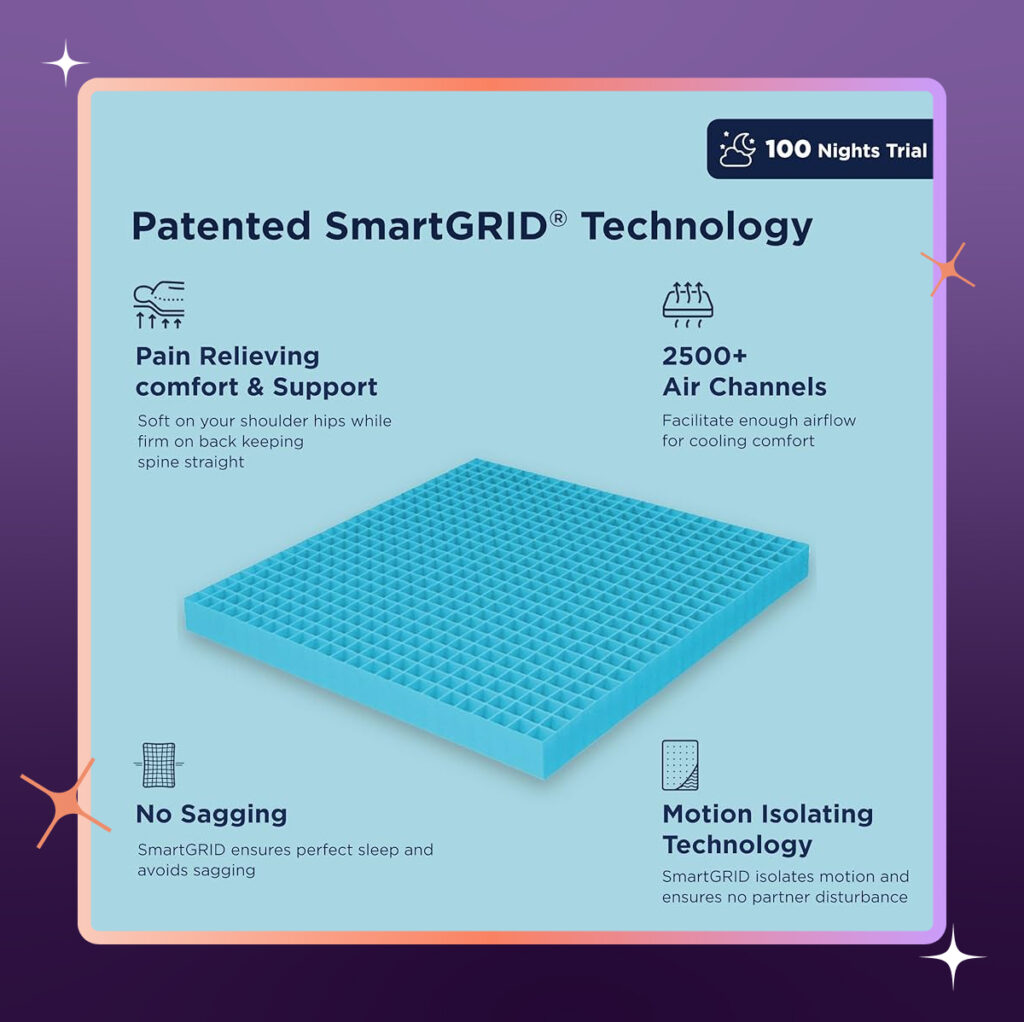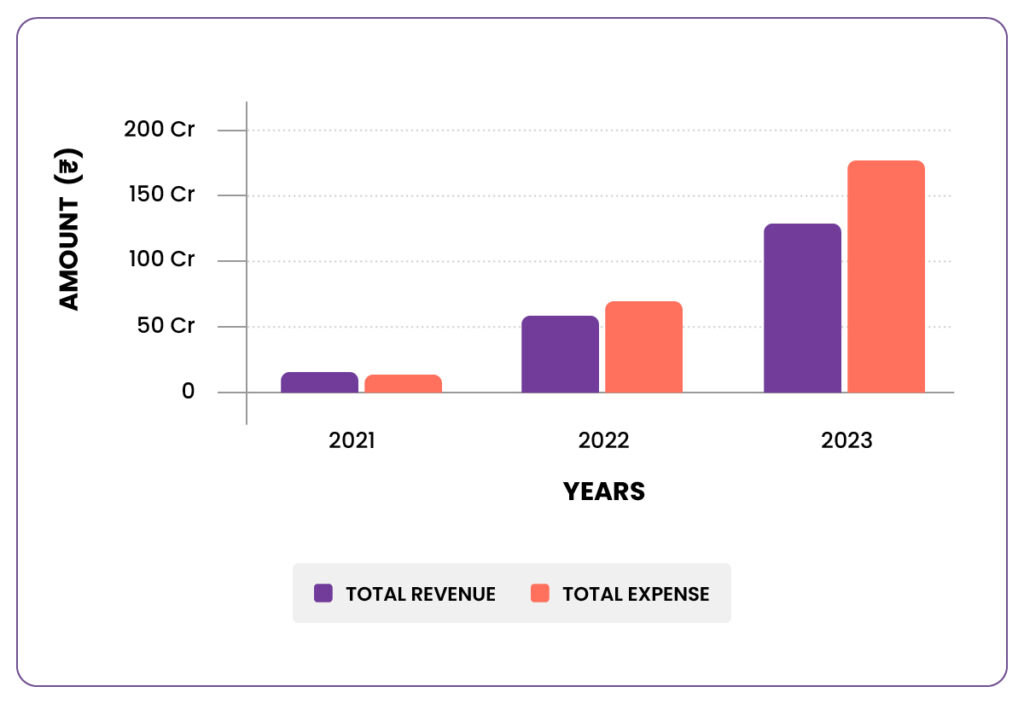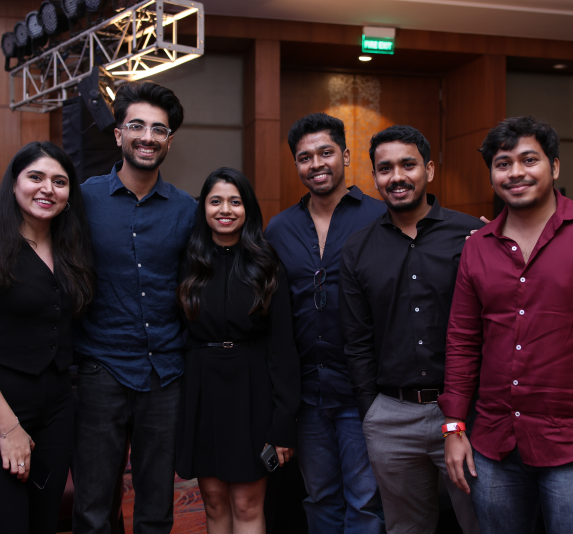Let’s face it—everyone’s replacing conventional mattresses with new-age, comfortable solutions that promise more restful nights.
In FY24 alone, the global mattress market raked in a whopping INR 302,800 Cr. But that’s just the tip of the iceberg—it’s growing at a blistering 17% CAGR annually.
Closer to home, the Indian mattress market is catching up with these astounding stats:
🔷 Worth INR 20,000 Cr in 2022
🔷 7 to 9 million units sold every year
At the centre of this massive mattress revolution is The Sleep Company, a D2C company founded by Priyanka Salot and her partner, Harshil Salot in 2019.
In this edition, we’ll dive into how The Sleep Company took the entire Indian mattress industry by storm with one growth lever.
Laying Down The First SmartGRID!
The Sleep Company knew they needed value-based differentiation – more than just sleek marketing campaigns or better foam densities to stand out (which was 40% organised by 2021).
To carve a distinct niche, they went all-in on innovation and R&D, collaborating with a team of DRDO scientists led by Dr. Tripathi, a former polymer head from DRDO, to introduce their game-changing patented SmartGRID technology
What Makes SmartGRID So Revolutionary?
SmartGRID is the only mattress with a grid-shaped hyper-elastic polymer. No matter how you sleep, it is firm enough to support your back and spine, but also soft enough to adapt to the shape of your body. The 2500 air channels in a SmartGRID structure facilitate enough airflow. It’s the only mattress of its kind.
This innovation drove 80% of The Sleep Company’s early traction as people couldn’t stop talking about the breakthrough in comfort.
Not Just Mattresses: A Full Suite of Sleep Solutions
Priyanka and Harshil didn’t stop at mattresses. Once SmartGRID was a hit, they used the same patented technology to launch a range of
products like recliner beds, chairs, pillows, and mattress accessories, expanding their portfolio and boosting their revenue.
The Results? Astounding Growth!
✔️ 300% growth in YoY revenue by 2021
✔️ INR 150 Cr in revenue by the end of FY22
✔️ INR 500 Cr ARR in FY24
Pillars Cushioning Growth Of The Sleep Company
While SmartGRID technology is undoubtedly The Sleep Company’s growth hero, the brand’s expansion success goes beyond just product innovation.
Their strategy perfectly blends product differentiation, smart marketing, and a robust omnichannel presence.
Aggressive Spend On The Right Marketing Channels
As Priyanka, co-founder of The Sleep Company, mentioned in an interview: “We took a year to analyse customer behaviour and figured out which channels our target audience consumed the most content.”
This deep-dive helped the team deploy their marketing budget aggressively and smartly, focusing primarily on influencer marketing and YouTube campaigns.
By 2021, the company allocated 25% of its revenue to marketing, specifically zeroing in on Tier 1 and Tier 2 cities. In fact, their D2C website became a major contributor, accounting for 45% of total sales!
Strategic Marketplace Expansion
Though originally a D2C brand, The Sleep Company partnered with major e-commerce players like Amazon, Flipkart, and Pepperfry.
Subsequently, The Sleep Company sold over 75,000 units by the end of FY22 on these marketplaces.
Oh, and did we mention? The products maintain a 4.6+ rating on Amazon.
Omni-Channel Strategy
They ventured into offline experience centres where customers could physically try out mattresses before making a purchase
By FY24, the company established 121 COCO (Company-Owned-Company Operated) experience centres in key Tier 1 and Tier 2 cities. These centres have become an essential touchpoint for customers looking to feel and experience the unique comfort of SmartGRID mattresses firsthand.
The Final Dream Run?
The Sleep Company has proven that innovation and smart execution are the real differentiators. It shows in the numbers.
The Sleep Company’s growth story is not only about selling mattresses—it’s a playbook on creating value and scaling efficiently.
A company spokesperson recently revealed – The Sleep Company might turn profitable in FY25.
What do you think?










.svg)
.svg)





